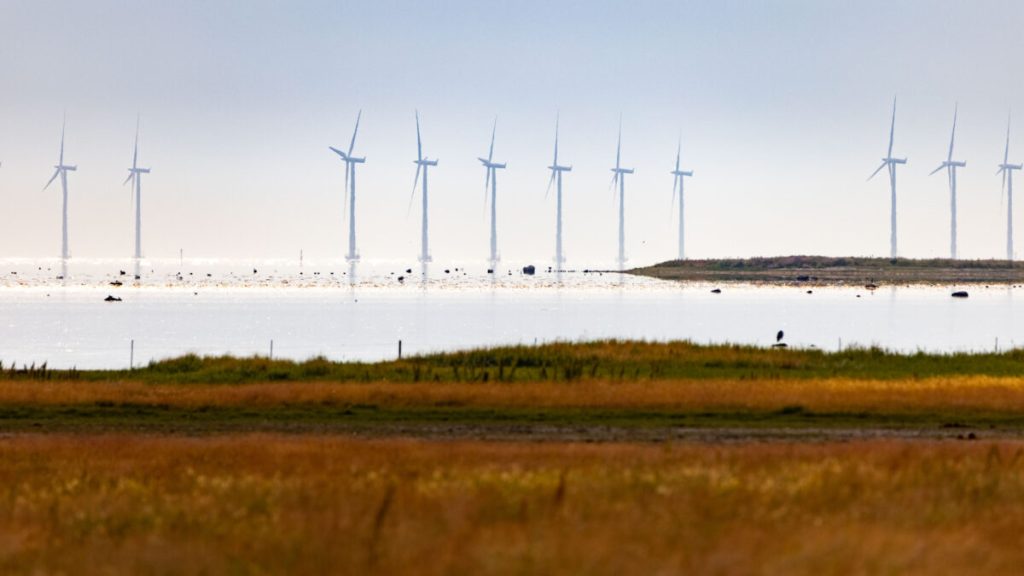
Imagine a world where the energy that powers our homes, businesses, and cities comes from sources that ensure a sustainable future for our children and grandchildren. Embracing renewable energy, which can combat climate change by reducing dependence on fossil fuels, will be crucial to making this future a reality (United Nations, n.d.). But what exactly is renewable energy, and how is it being harnessed across the globe? In this blog, we’ll explore what makes energy “renewable,” examine five key types of renewable energy sources, and highlight specific locations or projects where these technologies are making an impact today and leading the way to a better future for all of us.
What Is Renewable Energy?
Renewable energy comes from natural sources that are replenished on a human timescale. Unlike fossil fuels, which take millions of years to form, renewable energy sources are continuously available and sustainable. Common renewable energy sources include sunlight, wind, water, biomass, and geothermal heat (International Renewable Energy Agency [IRENA], 2023). Every energy source has the potential for negative environmental impacts; however, harnessing renewable energy sources can allow us to generate electricity, heat, and transportation fuels with far less environmental impact than existing greenhouse gas (GHG)-emitting sources (Scandrett, 2024).
1. Solar Energy
Harness the Power of the Sun
Solar energy is one of the most accessible and widely used forms of renewable energy. By capturing sunlight through photovoltaic (PV) panels or solar thermal systems, it is possible to generate electricity and heat water or air. Solar energy is clean, abundant, and adaptable to a wide range of applications, from residential rooftops to large-scale solar farms.
Leading by Example: Babcock Ranch, Florida
Babcock Ranch is a pioneering community that has embraced solar energy as its primary power source. Located near Fort Myers, this town is powered by an 870-acre solar farm that generates more electricity than the community consumes. As a result, Babcock Ranch is often referred to as the “first solar-powered town in America” (Sunkara, 2020).
2. Wind Energy
Turn Wind into Power
Wind energy is harnessed using turbines that convert kinetic energy from the wind into electricity. Wind farms can be located onshore or offshore, and they offer one of the most cost-effective sources of renewable energy.
Leading by Example: Samsø, Denmark
The island of Samsø is a global leader in wind energy. Through a combination of onshore and offshore wind turbines, the island produces more electricity than it consumes, making it not only carbon-neutral but also a net exporter of renewable energy (United Nations Climate Change, n.d.). Samsø’s transformation into a green energy hub using a combination of wind, solar, and biomass to generate power has inspired other communities worldwide.
3. Hydropower
Energy from Water Flow
Hydropower generates electricity by using the flow of water to turn turbines. It is the oldest and most established form of renewable energy, accounting for a significant portion of global renewable electricity generation. Hydropower systems range from large dams to small-scale run-of-river projects.
Leading by Example: Itaipú Dam, Brazil and Paraguay
The Itaipú Dam on the Paraná River is one of the largest hydropower plants in the world. Jointly operated by Brazil and Paraguay, it provides approximately 86% of Paraguay’s electricity and 9% of Brazil’s electricity (Ayala, 2022). This massive project showcases hydropower’s potential to meet energy needs on a large scale (PPIAF, 2020).
4. Biomass Energy
Fueling the Future with Wood and Waste
Biomass energy is derived from organic materials, such as wood, agricultural crops, and animal waste. These materials can be burned directly for heat or converted into biofuels for electricity generation and transportation. Biomass is considered renewable as long as the source materials are sustainably managed.
Leading by Example: Finland
Finland has invested considerable resources into developing and studying energy generation from woody biomass. As a result, they are a globally recognized leader in sustainably managing forest resources to provide heating and power and implementing new technologies to achieve high levels of efficiency in their CHP (combined heat and power) plants (IRENA, 2018).
5. Geothermal Energy
Harnessing Earth’s Natural Heat
Geothermal energy taps into the heat stored beneath the Earth’s surface. This heat can be used to generate electricity or provide direct heating for buildings and industrial processes. Geothermal plants are highly reliable and operate continuously, regardless of weather conditions.
Leading by Example: Reykjavík, Iceland
Nearly all of the heating and hot water needs of Reykjavík, the capital of Iceland, are met through geothermal energy (Green City Times, n.d.). Additionally, geothermal power plants contribute significantly to the country’s electricity generation, making Iceland a global leader in renewable energy use.
Conclusion
A Renewable Path Forward
Renewable energy offers a pathway to a cleaner, more sustainable future. From solar and wind to hydropower, biomass, and geothermal energy, these resources are transforming the way we power our world. The examples of Babcock Ranch, Samsø, Itaipú Dam, Finland, and Reykjavík demonstrate that renewable energy is not just a theoretical concept but a practical solution being implemented today.
As we continue to innovate and invest in renewable technologies, we have the opportunity to reduce greenhouse gas emissions, create jobs, and build resilient cities and towns. The transition to renewable energy is not just an environmental imperative, it’s an economic and social opportunity we can’t afford to miss.
Sources
- Ayala, R. B. (2022). The Itaipú Dam: The changing energy landscape in South America. Columbia Political Review. Retrieved from https://www.cpreview.org/articles/2023/9/the-itaipu-dam-the-changing-energy-landscape-in-south-america
- Babcock Ranch. (n.d.). First solar-powered town. Retrieved from https://www.babcockranch.com
- Green City Times. (n.d.) Green city solutions: Reykjavík, Iceland. Retrieved from https://www.greencitytimes.com/green-city-solutions-reykjavik-iceland/
- International Renewable Energy Agency (IRENA). (2023). Renewable energy overview. Retrieved from https://www.irena.org
- International Renewable Energy Agency (IRENA). (2018). Bioenergy from Finnish forests: Sustainable, efficient, modern use of wood. Retrieved from https://www.irena.org/publications/2018/mar/bioenergy-from-finnish-forests
- PPIAF Global Infrastructure Hub. (2020). Itaipú Hydroelectric Dam. Retrieved from https://www.gihub.org/connectivity-across-borders/case-studies/itaipu-hydroelectric-dam/
- Orkuveita Reykjavíkur. (2023). Geothermal energy in Iceland. Retrieved from https://www.or.is
- Samsø Energy Academy. (2023). Samsø’s renewable energy journey. Retrieved from https://www.samsoenergyacademy.dk
- Scandrett, G. (2024). Environmental impacts of renewable energy sources. ADEC ESG. Retrieved from https://www.adecesg.com/resources/blog/environmental-impacts-of-renewable-energy-sources/
- Sunkara, L. (2020, March 2). A look inside Babcock Ranch: America’s first solar-powered town. Forbes. Retrieved from https://www.forbes.com/sites/lavanyasunkara/2020/03/02/a-look-inside-babcock-ranch-americas-first-solar-powered-town/
- United Nations. (n.d.). Renewable energy. Retrieved January 28, 2025, from https://www.un.org/en/climatechange/raising-ambition/renewable-energy
- United Nations Climate Change (n.d). Samsø: An island community pointing to the future: Denmark. Retrieved from https://unfccc.int/climate-action/un-global-climate-action-awards/climate-leaders/samso
This blog was written by Dr. Jennifer Cartier with the assistance of AI language model ChatGPT (OpenAI, 2024) to brainstorm ideas, optimize SEO, and format references in the creation of this work.



